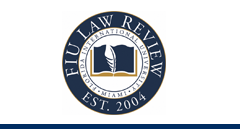Alternate Title
Tarnished Gold: The Endangered Species Act at 50
Keywords
endangered species, wildlife, conservation, endangered species act, biodiversity, habitat conservation
Abstract
The ESA is arguably the most powerful and stringent federal environmental law on the books. Yet for all of the Act’s force and ambition, it is unclear how much the law has done much to achieve its central purpose: the conservation of endangered species. The law has been slow to recover listed species and has fostered conflict over land use and scientific determinations that frustrate cooperative conservation efforts. The Article aims to take stock of the ESA’s success and failures during its first fifty years, particularly with regard the conservation of species habitat on private land. While the Act authorizes powerful regulatory tools for species conservation, there are serious questions as to whether such tools are the most effective means of conserving species and the habitats on which they rely. Given that most species rely upon private land for their survival, the Act’s ability to foster private land conservation is will affect the law’s overall success.
Recommended Citation
Jonathan H. Adler, Tarnished Gold: The Endangered Species Act at 50, 18 FIU L. Rev. 385 (2024), https://doi.org/10.25148/lawrev.18.2.10.





